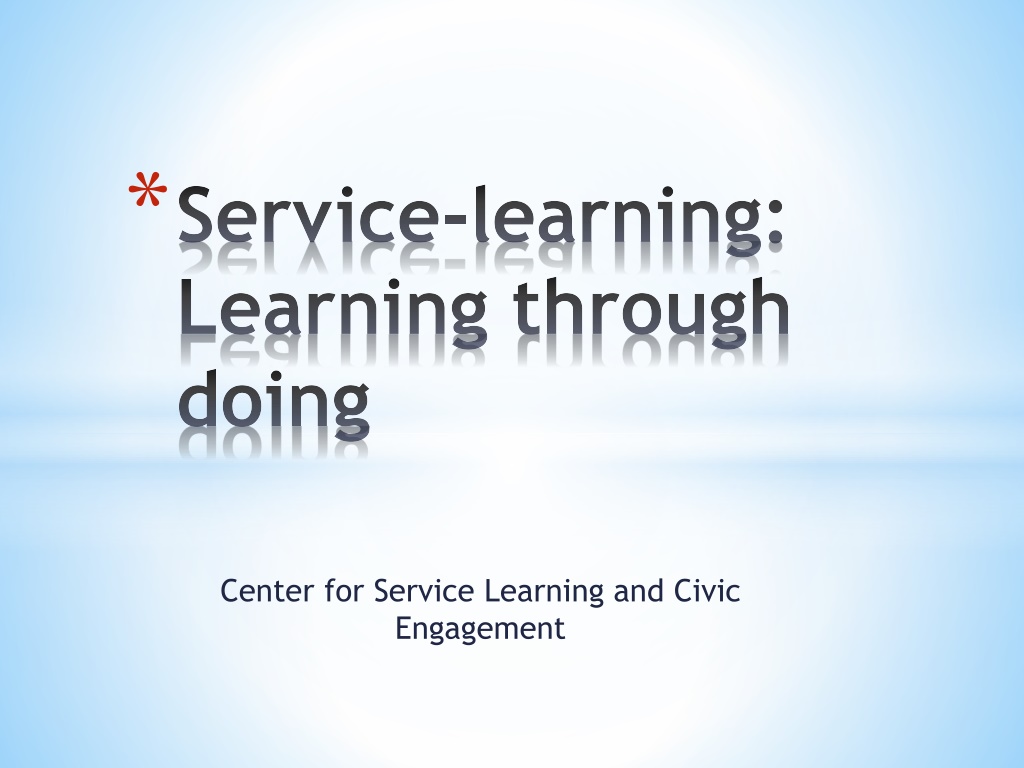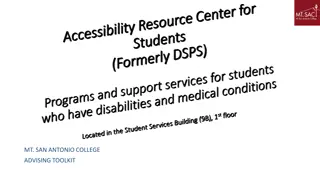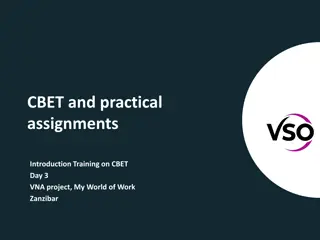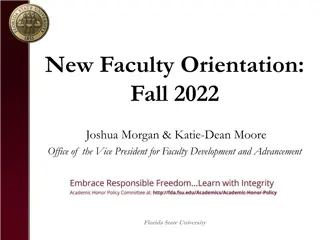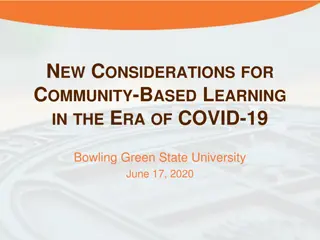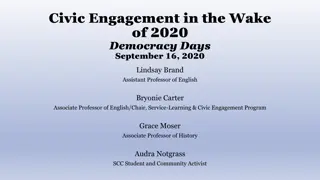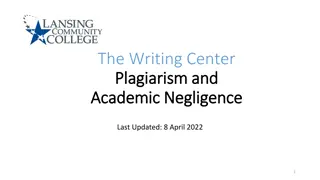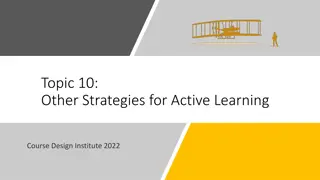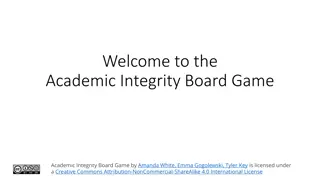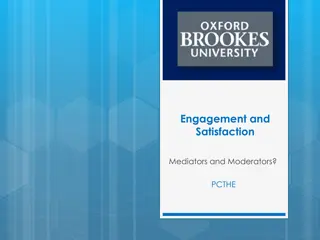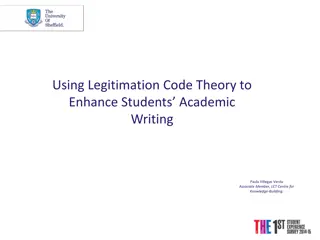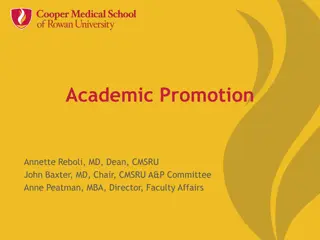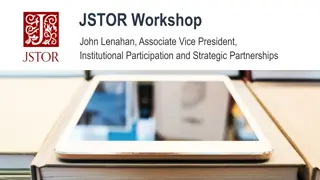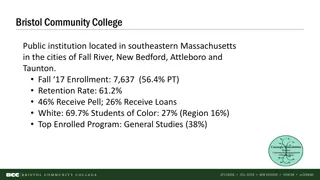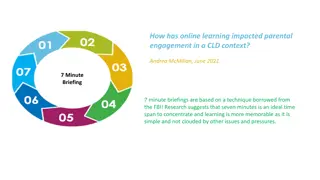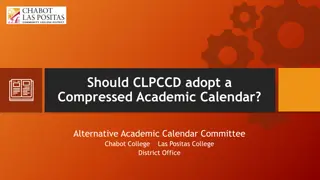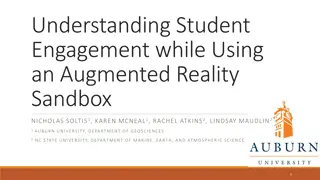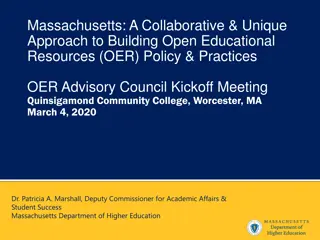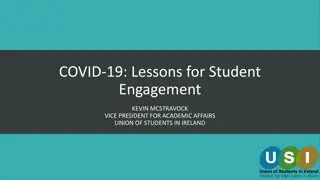Understanding Service-Learning: A Practical Approach to Academic Engagement
Delve into the concept of service-learning, a structured academic experience that combines course objectives with meaningful contributions to communities. Explore various approaches like direct, indirect, advocacy, and research-based service-learning, along with examples such as tutoring, historical restoration, and environmental preservation. Discover how service-learning fosters skills like interpersonal communication, problem-solving, and teamwork while making a positive impact on society.
Download Presentation

Please find below an Image/Link to download the presentation.
The content on the website is provided AS IS for your information and personal use only. It may not be sold, licensed, or shared on other websites without obtaining consent from the author. Download presentation by click this link. If you encounter any issues during the download, it is possible that the publisher has removed the file from their server.
E N D
Presentation Transcript
*Service-learning: Learning through doing Center for Service Learning and Civic Engagement
*What exactly is service-learning *It is a structured learning experience within an academic course. *Service work is directed toward achieving course learning objective/s and toward making meaning contributions. *Service activity is used to clarify, illustrate, challenge, or stimulate additional thought about academic content of the course. *Structured written and/or oral reflection ties the service experiences to academic content.
*Course learning objectives should be linked to meaningful human, safety, educational, and environmental needs. *Course materials such as lectures, readings, and discussions are then applied by students directly to support or enhance community needs. * Planned reflection is necessary in the service-learning process.
*Service-learning takes different approaches
*Direct Service-learning *Person-to-person, face-to-face service projects *Indirect Service-learning *Working on broad issues, environmental projects *Advocacy Service-learning *Educating others about topics of public interest *Research-based Service-learning *Gathering and presenting information on areas of interest and need *Types of Service- learning
*Examples: *Tutoring other students and adults *Conducting art/music/dance lessons for younger students *Helping other students resolve conflicts *Creating life reviews for Hospice patients IMPACT on/skills practiced: caring for others, dependability, interpersonal skills, problem-solving, big picture learning *Direct Service-learning
*Examples: *Compiling a town history *Restoring historic structures or building low- income housing *Restoring ecosystems *Preparing preserve areas for public use IMPACT on/skills practiced: cooperation, teamwork skills, playing different roles, organizing, prioritizing, project-specific skills *Indirect Service-learning
*Examples: *Planning and putting on public forums on topics of interest in the community; *Conducting public information campaigns on topics of interest or local needs; *Working with elected officials to draft legislation to improve communities; *Training the community in fire safety or disaster preparation. IMPACT on/skills practiced: understanding rules, systems, processes; engaged citizenship, working with adults. *Advocacy Service-learning
*Examples: *Writing a guide on available community services; * Translating it into Spanish or other languages of new residents *Conducting longitudinal studies of local bodies of water; water testing for local residents; *Gathering information and creating brochures or videos for non- profit or government agencies; *Mapping state lands and monitoring flora and fauna; *Conducting surveys, studies, evaluations, experiments, interviews, etc. IMPACT on/skills practiced: learn how to learn/get answers/find information, make discriminating judgments, work systematically, organizational skills, how to assess, evaluate and test hypotheses. *Research-based
*How much time should be allotted to the service learning portion of the course? *The rule of thumb is that for the student it includes: *the preparation and analysis time, *the time for written and oral reflection, and *the actual time spent in the community. (Actual time is suggested that service be at least 20 hours).
*What % of final grade should the service learning activity? To qualify as a service-learning course, 15% of the student s grade should be based on this activity.
* Best practices for grading service-learning assignments: 1. A well-structured grading rubric! 2. Evaluation of student s ability in meeting course learning objectives grade for their learning not their service. 3. Do not have a service grade and a just learning grade. 4. Do grade on the final, tangible project deliverable/s which demonstrates the students learning.
*Setting standards in advance! Developing a rubric! 1.Structured 2.Specific 3.Concrete 4.Provide examples of past good work
*Components of the grade Major assignment: papers, presentations, test questions can connect service experience to course content. Supporting reflection assignment: Use guided questions to compel students to think critically and share through blogs, reflection papers, class discussions. Additional feedback: Seek feedback from community partner where student is providing service Compliance with deadlines: Handing in forms on time, communicating with faculty, completing the Service learning evaluation at end of semester
Reflection is the key to the experiential learning cycle
Review your syllabus What learning objectives would best be augmented by service-learning?
